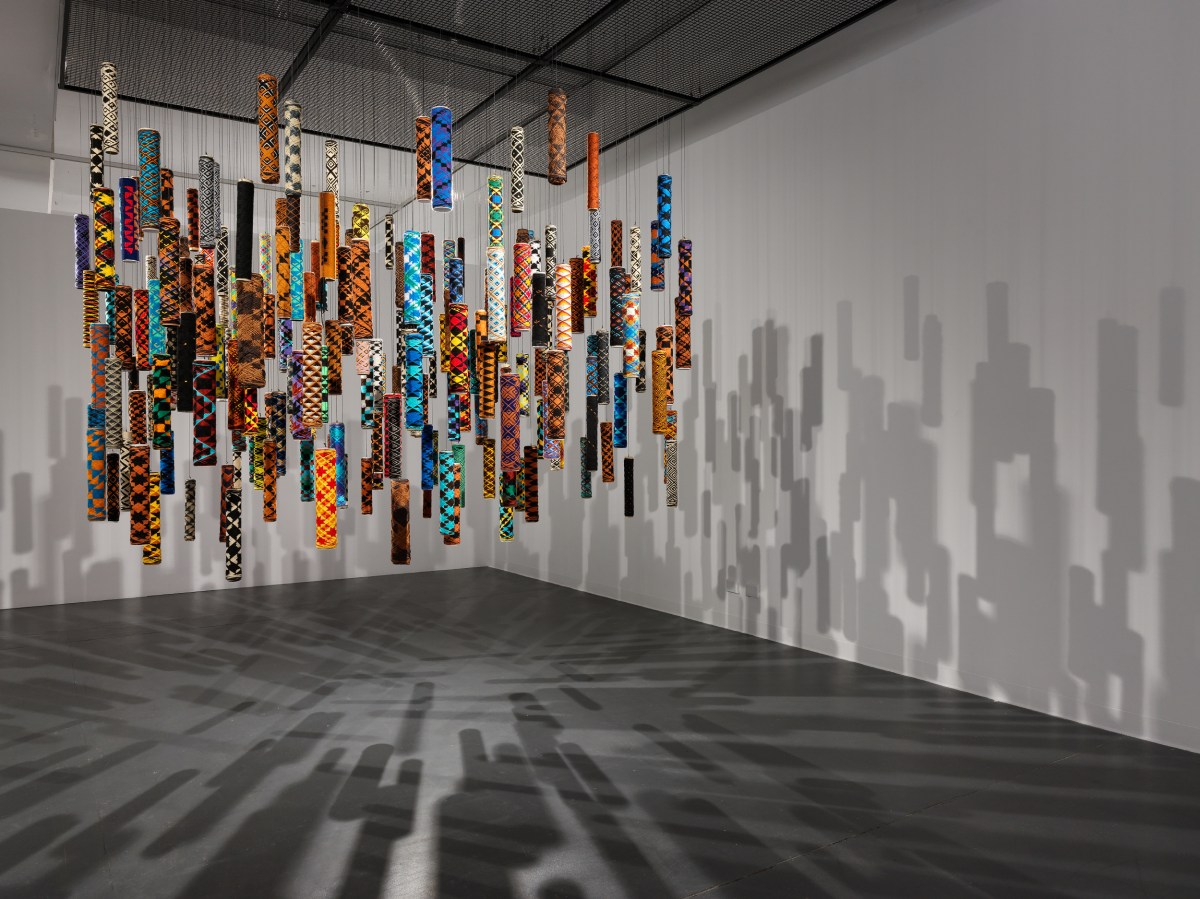Last year, the 23rd Biennale of Sydney asked: if ecosystems are dynamic, living beings with individual needs, what might they be trying to tell us? A river that flows both ways: Selected works from the 23rd Biennale of Sydney: rīvus, presents a local response to that 2022 exhibition and the questions it raised.
Their interpretations are currently on display at ACE gallery in Adelaide. These works highlight water systems as vital, fundamental forces the power of which can be felt in the mundane and microscopic, as much as in cataclysmic or spiritual encounters.
Aluaiy Kaumakan’s billowing textile installation, Semasipu – Remembering Our Intimacies, fills ACE’s front room. Drawing on traditional weaving and rubbing techniques practised by Taiwan’s Indigenous Paiwan community, she pays homage to her ancestral home, which was devastated by a typhoon in 2009. When first faced with the enveloping floor-to-ceiling drapery of Semasipu, it feels otherworldly. Closer study reveals the imprints of everyday domestic objects from Kaumakan’s village, which she has used in the printing process of this tactile, intimate work.
Auckland-based artist Sopolemalama Filipe Tohi likewise takes a contemporary approach to traditional techniques in Haukulasi, a collection of woven pieces that hang suspended under bright lights, casting geometric shadows on the surrounding white walls. The pieces themselves, for which Tohi has used the Tongan practice of lalava wrapping, are a stunning kaleidoscope of colour and pattern: a mix of traditional coconut sennit and bright wool.
In the lalava patterns, Tohi sees ‘the double helix of DNA … constellations in the night sky’. Another creator interested in these kinds of intricate, fundamental patterns is Imhathai Suwattanasilp. The Thai artist explores the interconnectedness of life (and thus our responsibility to address pressing environmental issues), with hundreds of tiny wonder-evoking objects: plankton made of human hair, stars made of fish scales and the swirling structure of a virus formed with termite wings.
Yuko Mohri’s Moré Moré Tokyo (Leaky Tokyo): Fieldwork series of photographs is a fascinating visual record of the modern sculptures temporarily and unwittingly formed in efforts to control water leaks in Tokyo subway stations. She further develops this idea in her installation, Moré Moré (Leaky): Variations, which features similar configurations of buckets, umbrellas, plastic bottles, hoses and other objects. Water is pumped around this ecosystem, making us consider our own place in the natural cycles of our environment.
Biennale Artistic Director José Roca wanted major rivers themselves to participate in the exhibition, their voices represented by custodians speaking on their behalf. Now at ACE, Ngarrindjeri writer and educator Clyde Rigney Jnr is the voice of Murrundi (Murray River). As well as greeting visitors in a series of video recordings, he is taking part in the program of local public events accompanying this exhibition, speaking alongside First Nations artists on the importance of our relationship with our waterways and the damage done by colonialism and ‘introduced management systems’.
Read: Exhibition review: Bunuru, Perth Institute of Contemporary Arts Bunuru
Given the global nature of the environmental issues we face, it is fitting that the exhibition addressing them is an interstate collaboration featuring pieces from international artists. It is also a reminder that traditional knowledges and practices will be vital in our efforts to restore balance with the natural world.
A river that flows both ways: selected works from the 23rd Biennale of Sydney: rīvus
Adelaide Contemporary Experimental
Artists: Aluaiy Kaumakan, Yuko Mohri, Murrundi/Murray River, Imhathai Suwatthanasilp and Sopolemalama Filipe Tohi
A river that flows both ways will be on display until 18 March 2023.





